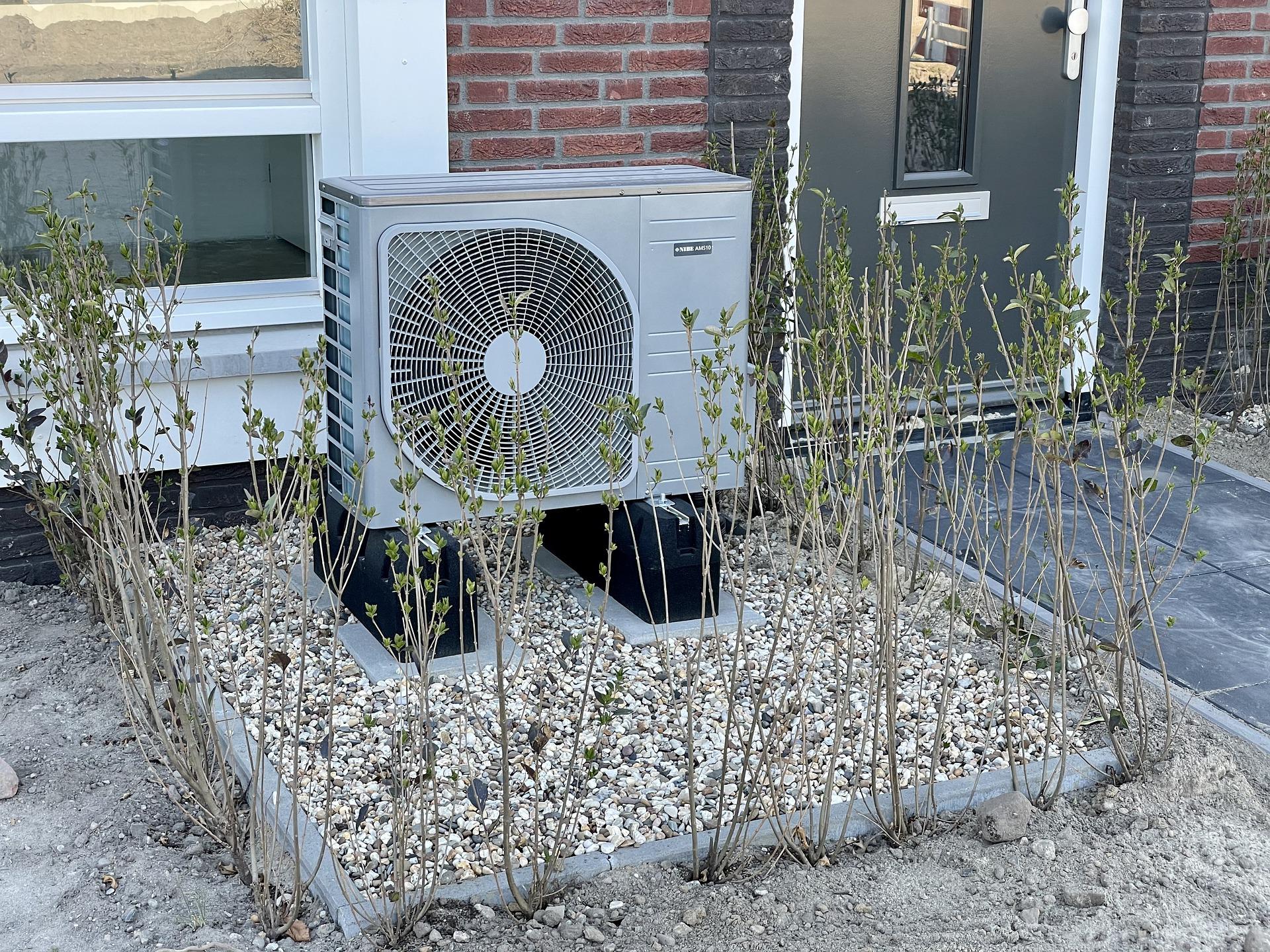

Heatwaves are worsening due to climate change, plaguing typically chilly places like Seattle and parts of Europe. Places that are already used to tropical temperatures, including India and Pakistan, are experiencing conditions bordering on unlivable.
With worsening heat comes a steady demand for air conditioning units, which are set to triple in demand by 2050. In 2016, only 8 percent of the 2.8 billion people living in the warmest parts of the world have access to AC. But that number is growing—and with increased use comes higher energy consumption, which can add up to even more stress on the climate.
Thankfully, there are better options out there to efficiently cool buildings, and even save money on utilities, which is crucial for vulnerable communities that already pay a high price for energy. Heat pumps can both cool and heat a building more efficiently than air conditioners or furnaces, cut energy bills, and decrease heating-related emissions by 45 to 72 percent. The technology was first invented back in the 1850’s; today, Americans are buying millions of heat pumps a year, though air conditioning is still more popular by far. But a pair of new bills in Congress might just be the ticket to getting heat pumps in more homes.
The first of the two bills, called the “Installing Clean Efficient Energy Hastens Our Transition” or ICEE HOT Act, creates a rebate system for distributors of heating, ventilation, and air conditioning. The second, named the Heating Efficiency and Affordability through Tax Relief (HEATR) Act, provides a tax incentive for manufacturers to produce efficient and affordable heat pumps. With heat pumps as a more affordable alternative to AC units, making the switch can be more realistic for average people.
“Far too many households across our state struggle to afford their heating costs. Families should not have to choose between paying for heat and other essential necessities,” lead sponsor Senator Amy Klobuchar, D-M.N., said in a press release last week. “This legislation is a win-win—reducing energy costs for consumers, while strengthening access to clean, energy-efficient heating solutions.”
[Related: How heat pumps can help fight global warming]
But to understand the benefits of heat pumps, it’s crucial to know how they work. According to sustainability research group Carbon Switch, the process is quite simple—an evaporator scoops up heat from inside your home and pumps it back into the outdoors. The system is made up of an outdoor and indoor unit, as well as a compressor which moves the refrigerant through the system, and two valves that can pressurize the refrigerant or reverse its flow to switch from heating to cooling.
This happens thanks to a very simple concept in physics: Heat is always trying to move toward cold air, which is more or less how ACs and fridges work. But a heat pump can reverse that process in the winter. Colder temperatures put pressure on the system’s refrigerant. The heat pump then absorbs any warmth it can find outdoors to turn liquid into gas. The energy generated from this process is used to keep the inside of people’s homes cozy in the most frigid climates. In fact, icy places like Norway and Finland have the highest heat pump-per-household rate in Europe; Maine beats them both out with its per-capita use.

Installing a few heat pumps might not seem like a big deal. But research released by the appliance-efficiency nonprofit Clasp shows that bumping the market share for the technology from 10 percent to 44 percent by 2032 could save Americans around $27 billion on energy bills. It could also provide $80 billion in “additional social benefits,” stop 888 air-quality related premature deaths a year, and drop carbon dioxide emissions by 49 million tons.
Old-school HVAC systems can last up to two decades after installation. So rather than waiting for them to sputter out, these new Congressional bills could incentivize plumbers and homeowners to swap in heat pumps, the authors of the Clasp study recently wrote in Canary Media. “Locking in outdated infrastructure in this way pushes back the clock for American decarbonization by decades,” they explained. Oftentimes people don’t even have to throw out their entire heating or cooling system to get a heat pump installed—creating hybrid systems or using fossil-fuel furnaces as backup can still make a dent in energy use.
In a world where weather is unpredictable, fuel prices are unstable, and climate change has the ability to impact just about anything, it’s crucial to be able to maintain safe temperatures at home in a sustainable way. Heat pumps provide an option for people of any income level and region.
